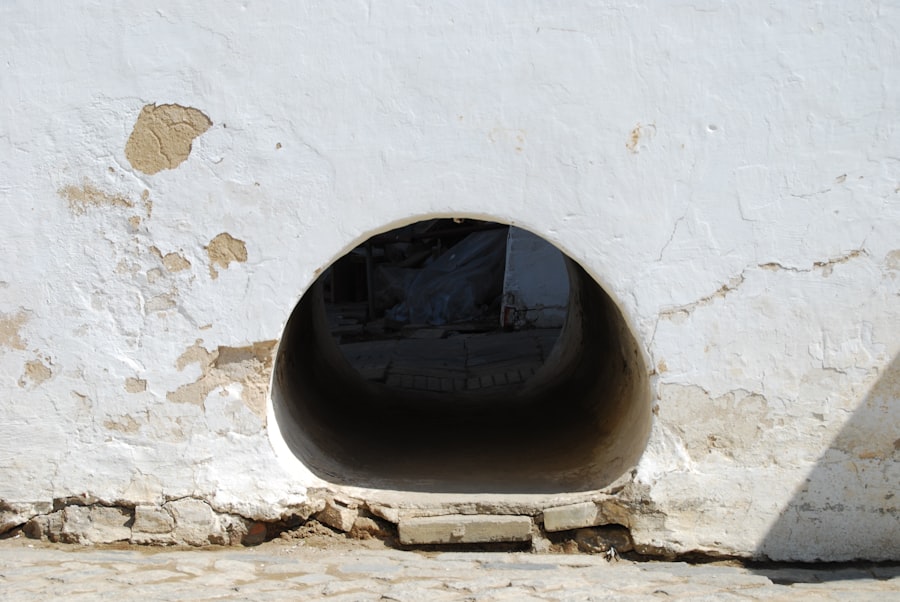The Drake and Magellan Passages are two of the most significant maritime routes in the southern hemisphere, each offering unique characteristics and challenges. The Drake Passage, located between the southern tip of South America and Antarctica, is known for its turbulent waters and unpredictable weather. It serves as a critical connection for vessels traveling to and from the Antarctic region.
In contrast, the Magellan Passage, situated further north, is a navigable strait that runs through the southern part of Chile, providing a sheltered route for ships seeking to avoid the treacherous waters of the open sea. Both passages have played pivotal roles in maritime history, serving as gateways for exploration, trade, and scientific research. The Drake Passage is often regarded as one of the most challenging bodies of water to navigate due to its strong currents and frequent storms.
Meanwhile, the Magellan Passage offers a more sheltered alternative, although it is not without its own navigational complexities. Understanding these two passages is essential for anyone interested in maritime navigation or the history of exploration in the southern hemisphere.
Key Takeaways
- The Drake Passage is located between South America’s Cape Horn and the South Shetland Islands of Antarctica, while the Magellan Passage is located in the southern region of Chile.
- The Drake Passage is known for its rough seas and strong winds, while the Magellan Passage offers a more sheltered and navigable route due to its inland location.
- The Drake Passage has a rich history of exploration and is named after Sir Francis Drake, while the Magellan Passage is named after the famous explorer Ferdinand Magellan.
- Navigating the Drake Passage requires careful consideration of weather patterns and sea conditions, while the Magellan Passage presents challenges such as narrow channels and strong tidal currents.
- Both passages offer opportunities to witness diverse wildlife and natural wonders, including penguins, whales, and stunning landscapes, making them popular routes for eco-tourism and adventure travel.
Differences in Geography and Climate
Geographically, the Drake Passage is characterized by its vast expanse of open water, stretching approximately 800 kilometers (500 miles) between Cape Horn and Antarctica. This body of water is known for its deep oceanic trenches and strong currents, which can create rough seas that are daunting for even the most experienced sailors. The climate in this region is predominantly cold and windy, with temperatures often hovering around freezing, especially during the winter months.
The unpredictable weather patterns can lead to sudden storms, making navigation a formidable challenge. In contrast, the Magellan Passage is a series of narrow channels and islands that provide a more sheltered environment for vessels. This strait is surrounded by land on both sides, which helps to mitigate some of the harsh weather conditions found in the Drake Passage.
The climate here is milder, with temperatures that can vary significantly depending on the season.
These geographical and climatic differences not only influence navigation but also impact the types of wildlife and natural resources found in each area.
Historical Significance of the Passages

Historically, both the Drake and Magellan Passages have been crucial to maritime exploration and trade. The Magellan Passage was named after the famous explorer Ferdinand Magellan, who first navigated this route in 1520 during his expedition to circumnavigate the globe. This passage allowed ships to avoid the perilous waters around Cape Horn, making it a vital route for explorers and traders alike.
Over the centuries, it has facilitated trade between Europe and Asia, as well as between various South American ports. The Drake Passage also holds historical significance as it was traversed by numerous explorers seeking to reach Antarctica. The passage became a key route for whalers and sealers in the 19th century, as well as for scientific expeditions in the 20th century.
Its challenging conditions have made it a site of numerous maritime disasters, but it has also been a proving ground for advancements in navigation and shipbuilding. Both passages have shaped not only maritime history but also the geopolitical landscape of southern South America.
Navigational Challenges and Considerations
| Challenges | Considerations |
|---|---|
| Complex navigation structure | Ensure clear hierarchy and intuitive pathways |
| Mobile responsiveness | Optimize for various screen sizes and devices |
| Information overload | Implement filters and search functionality |
| Slow loading times | Optimize images and minimize HTTP requests |
Navigating through either the Drake or Magellan Passages presents unique challenges that require careful planning and consideration. The Drake Passage is notorious for its rough seas, strong currents, and rapidly changing weather conditions. Sailors must be prepared for high waves and sudden storms that can arise without warning.
The passage’s depth variations and underwater topography also pose risks for vessels that are not adequately equipped or experienced in navigating such treacherous waters. On the other hand, while the Magellan Passage offers more sheltered waters, it is not without its own navigational challenges. The strait is dotted with numerous islands and rocks that can create hazards for unwary sailors.
Navigating through these narrow channels requires precise maneuvering and an understanding of local tides and currents. Additionally, fog can be a frequent occurrence in this region, further complicating navigation. Mariners must be equipped with reliable navigational tools and possess a thorough knowledge of the area to ensure safe passage through either route.
Wildlife and Natural Wonders Along the Routes
Both the Drake and Magellan Passages are rich in biodiversity and natural wonders that attract researchers and nature enthusiasts alike. The Drake Passage is home to a variety of marine life, including whales, seals, and an array of seabirds such as albatrosses and petrels. The nutrient-rich waters support a thriving ecosystem that plays a crucial role in the Southern Ocean’s food web.
Observing these magnificent creatures in their natural habitat is a highlight for many travelers who venture through this passage. In contrast, the Magellan Passage boasts stunning landscapes characterized by rugged coastlines, lush forests, and dramatic fjords. The region is home to unique wildlife such as penguins, sea lions, and various bird species that thrive in its temperate climate.
The natural beauty of this area is complemented by its rich cultural heritage, with indigenous communities having lived in harmony with these landscapes for centuries. Both passages offer unparalleled opportunities for wildlife observation and appreciation of nature’s wonders.
Choosing the Right Passage for Your Journey

When deciding between the Drake and Magellan Passages for a journey, travelers must consider their objectives and preferences. Those seeking adventure and a taste of raw nature may opt for the Drake Passage despite its challenges. This route is often favored by those heading to Antarctica for research or exploration purposes.
The thrill of navigating through turbulent waters can be an exhilarating experience for seasoned sailors or adventurous travelers. Conversely, those looking for a more leisurely journey may find the Magellan Passage to be more appealing. With its sheltered waters and stunning scenery, this route is ideal for leisurely cruises or explorations of Chile’s southern coast.
Travelers can enjoy opportunities for hiking, wildlife watching, and cultural experiences with local communities along the way. Ultimately, choosing between these two passages depends on individual preferences regarding adventure level, desired experiences, and travel goals.
Safety Precautions and Tips for Passage Navigation
Safety should always be a top priority when navigating either the Drake or Magellan Passages. Mariners are advised to conduct thorough pre-voyage preparations that include checking weather forecasts, understanding local tides and currents, and ensuring that all safety equipment is onboard and functional. It is essential to have reliable communication devices to stay connected with other vessels or shore stations in case of emergencies.
Additionally, travelers should consider joining guided tours or expeditions led by experienced professionals who are familiar with these waters. Such guides can provide valuable insights into navigation techniques while ensuring safety throughout the journey. For those venturing into these passages independently, maintaining situational awareness and being prepared for sudden changes in weather conditions are crucial for a safe passage.
Cultural and Indigenous Perspectives on the Passages
The cultural significance of both the Drake and Magellan Passages extends beyond their geographical features; they are deeply intertwined with the histories of indigenous peoples who have inhabited these regions for centuries. Indigenous communities such as the Mapuche in Chile have long regarded these waterways as vital parts of their cultural heritage. Their traditional knowledge of navigation and understanding of local ecosystems have been passed down through generations.
Moreover, these passages have served as conduits for cultural exchange between indigenous peoples and explorers throughout history. The stories, traditions, and practices associated with these waterways reflect a rich tapestry of human experience that continues to evolve today. Recognizing and respecting these cultural perspectives is essential for fostering meaningful connections with the land and its people during any journey through these passages.
Modern-Day Commercial Use of the Passages
In contemporary times, both the Drake and Magellan Passages continue to play significant roles in commercial shipping routes. The Magellan Passage serves as an important alternative to navigating around Cape Horn for cargo ships traveling between Atlantic and Pacific ports. This strait allows vessels to save time and avoid some of the most dangerous waters in maritime navigation.
The Drake Passage also sees commercial traffic, particularly from research vessels heading to Antarctica or fishing fleets operating in its rich waters. However, due to its challenging conditions, only well-equipped ships are able to traverse this passage safely. As global trade continues to evolve, both passages will likely remain vital arteries for maritime commerce in southern waters.
Environmental Impact and Conservation Efforts
The ecological significance of both passages cannot be overstated; they are home to diverse marine ecosystems that are increasingly threatened by human activity. Climate change poses significant risks to these environments, affecting ocean temperatures, currents, and marine life populations. Increased shipping traffic can also lead to pollution and habitat degradation if not managed responsibly.
Conservation efforts are underway to protect these vital ecosystems from further harm. Organizations dedicated to marine conservation work tirelessly to raise awareness about environmental issues affecting both passages while advocating for sustainable practices among commercial operators. Collaborative efforts between governments, NGOs, and local communities aim to ensure that these precious waterways remain healthy for future generations.
Future Outlook for Navigating the Drake and Magellan Passages
As global interest in exploration continues to grow alongside advancements in technology, the future outlook for navigating both the Drake and Magellan Passages appears promising yet complex. Innovations in ship design may enhance safety measures while improving fuel efficiency for commercial vessels traversing these routes. Additionally, increased awareness about environmental conservation may lead to stricter regulations governing shipping practices in these sensitive areas.
Navigators will need to adapt their strategies accordingly while remaining vigilant about potential environmental threats posed by increased human activity in these regions. Ultimately, fostering a balance between exploration, commerce, conservation efforts will be crucial in ensuring that both passages remain navigable while preserving their unique ecological heritage for generations to come.
The Drake Passage and the Magellan Passage are two of the most significant maritime routes in the Southern Hemisphere, each with its own unique challenges and historical significance. The Drake Passage, known for its treacherous waters, is the shortest crossing from Antarctica to the rest of the world, while the Magellan Passage, discovered by Ferdinand Magellan, offers a more sheltered route through the southern tip of South America. For those interested in exploring the geographical and historical context of these passages further, a related article can be found on MyGeoQuest. This article delves into the intricacies of these passages and their impact on global navigation. You can read more about it by visiting this page.
WATCH NOW! Drake Passage: Earth’s Deadliest Waters Revealed
FAQs
What is the Drake Passage?
The Drake Passage is a body of water located between the southern tip of South America and the northern tip of the Antarctic Peninsula. It connects the southwestern part of the Atlantic Ocean with the southeastern part of the Pacific Ocean.
What is the Magellan Passage?
The Magellan Passage, also known as the Strait of Magellan, is a navigable sea route located in southern Chile. It connects the Atlantic and Pacific Oceans, separating mainland South America to the north and Tierra del Fuego to the south.
Which passage is more treacherous for navigation?
The Drake Passage is known for its rough seas and strong winds, making it one of the most challenging and treacherous waterways for navigation. The Magellan Passage, while still presenting navigational challenges, is generally considered to be less treacherous than the Drake Passage.
What are the main differences between the Drake Passage and the Magellan Passage?
The main differences between the two passages lie in their location, size, and navigational challenges. The Drake Passage is located further south and is wider, with more extreme weather conditions, while the Magellan Passage is located further north and is narrower, with generally less severe weather.
Which passage is commonly used for commercial shipping and travel?
The Magellan Passage is more commonly used for commercial shipping and travel due to its relatively calmer waters and more predictable weather conditions compared to the Drake Passage. However, both passages are important for maritime transportation and scientific research expeditions.
